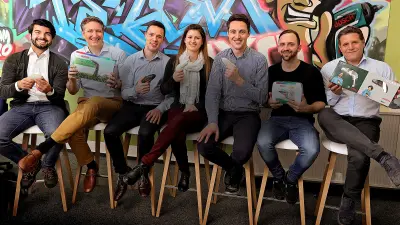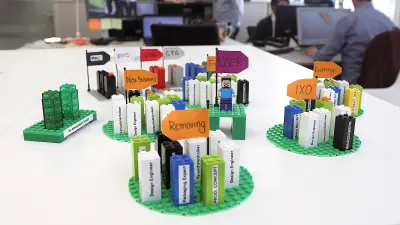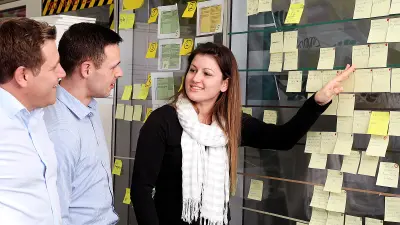Three-week sprints
When it comes to agility, the Ixo team leads the way in the Home and Garden business unit

Faster, more efficient – and with its finger on the pulse: the Bosch Power Tools division is reorganizing its Home and Garden business unit. The role model for the introduction of agile forms of organization and work was the Ixo team, which is now launching new products even more effectively.

Every do-it-yourselfer is familiar with the Ixo, the versatile Bosch cordless screwdriver. The power tool is now in its fifth generation – and continues to be refined. As well as the product itself, the ways the associates behind it work and are organized have changed fundamentally. So when the entire Home and Garden (HG) business unit was reorganized, the Ixo team served as a model. The transformation process started in April 2015 with an interdisciplinary team of four people from product management, brand management, business development, and engineering.
“When we began, we had only a vague idea of how to put the concept of ‘agility’ into practice in order to arrive at better results faster. Our brief was to act like a small, independent company.”
Helped by a coach, the new “purpose team” tried out agile working methods. It quickly became clear that there was no sense in using one approach alone. To achieve its aims of a high level of customer focus, assuming responsibility for sales and result, and the development of a future-proof portfolio, the Ixo team now makes use of an entire toolbox of modern innovation techniques, such as kanban, scrum, and design thinking.

Inspiring working conditions (IWC) in the Home and Garden business unit
The focus is on flexible working hours, telecommuting, modern IT applications, and an attractive and creative work environment.
This new working environment is intended to foster creativity, communication, and cross-functional collaboration, as well as to encourage associates to work independently. This means a large number of project and meeting rooms that make exchange and feedback possible at any time. But there are also quiet zones and rooms people can retreat to if they need to concentrate. Inspiring working conditions help make work more efficient.
Barriers between supervisors and associates are lowered, and direct exchange is made easier. The proximity to other disciplines means that colleagues from different functions – e.g. marketing, development, or quality – directly experience the way other units work, and benefit from this diversity. Innovative IT equipment makes flexible and virtual collaboration possible, which helps people act autonomously and find a balance between work and private life.
In an attractive environment geared to associates' needs, creativity can be enhanced. And apart from enhancing creativity, the telecommuting and many other working models offered by Bosch help associates to work independently and find a work-life balance. Inspiring working conditions are intended to allow associates to arrange their work in such a way that they feel at home – and are thus more motivated and productive.
At root, this is about a new working culture. A good working culture is essentially based on the following principles: a clear sense of belonging, mutual respect and trust, the opportunity to both concentrate and communicate, the freedom to work independently, and simplified means of exchange. These seven elements are the basis of IWC and of the reorganization of the Home and Garden unit. This also benefits customers, since innovative products are brought to market faster.
Summary
The reorganization of the Home and Garden business unit has helped make work faster and more efficient. In addition, more attractive working conditions make associates more creative and inspired, and this also benefits customers.